ecosystem-guides.com
....exploring the planet's ecosystems
AFROTROPICAL
Heathland (Fynbos)
The Fynbos heathlands in the southern temperate region of Africa is rich in bird, insect and most especially plant species...
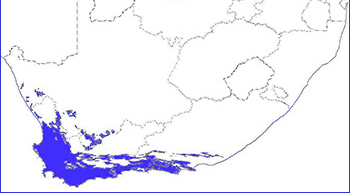 http://pza.sanbi.org/vegetation/fynbos-biome
http://pza.sanbi.org/vegetation/fynbos-biomeHeathlands are vegetation communities where the plants are usually just shrub high, due to various environmental conditions including nutrient-poor and usually sandy soil, lack of rainfall, and/or exposure. In Australia the heathlands are best developed in the south-west of the continent, and are known as Kwongan. The distribution of heathland in southern Africa in restricted to the extreme south and south west of the African continent. Further along the coast to the east there is higher rainfall and there are patches of subtropical rainforest. Further north along the west coast it becomes drier and is dominated by arid habitats. The heathland in Africa is known as Fynbos. Depending on who you are talking to in South Africa, and whether they are more Dutch Afrikaans or English South African, the pronunciations will vary along the lines of: 'fane-boss', 'fein bous', or 'fine-boss'.
The Fynbos has one of the highest diversities of plants in the world. In fact, it is so rich, it is classified as it's own floristic region separate from the rest of Africa, and equivalent to the other floristic regions of South America or Australasia. The rich floral diversity results in a high diversity of insects. There is also a range of birds that can be found, especially nectar feeders such as sunbirds and sugarbirds.
The most famous aspect of the fynbos, and the group with the highest diversity, is the flowering plants.
Within the ecosystem, the most famous group is the family Proteaceae. It is naturally distributed primarily in the southern hemisphere, including South America, Australasia and Africa. They are most diverse in the small heathland regions of south-west Australia and southern South Africa. There are over 80 genera and over 1,600 species.
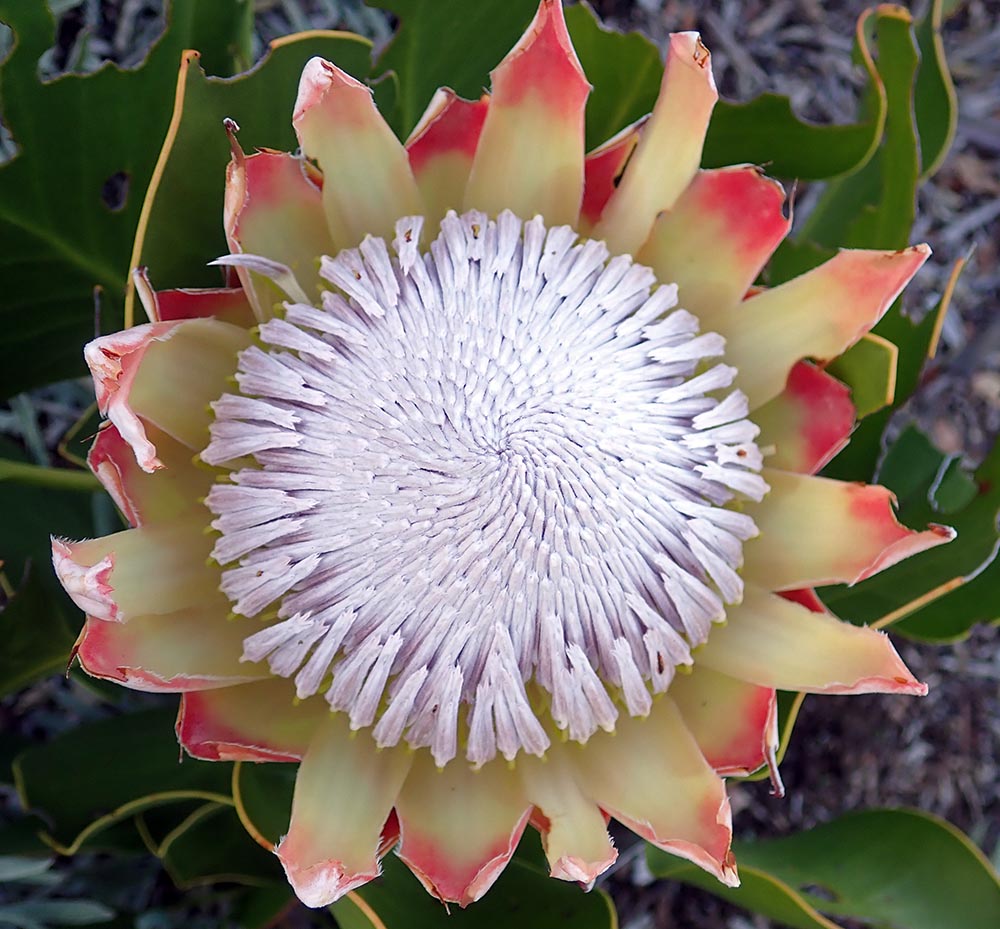 (Kirstenbosch Botanical gardens, Cape Town)
(Kirstenbosch Botanical gardens, Cape Town)The species of Proteaceae in South Africa include some of the biggest and showiest flowers in the world. They attract nectar feeding birds such as sunbirds and sugarbirds.
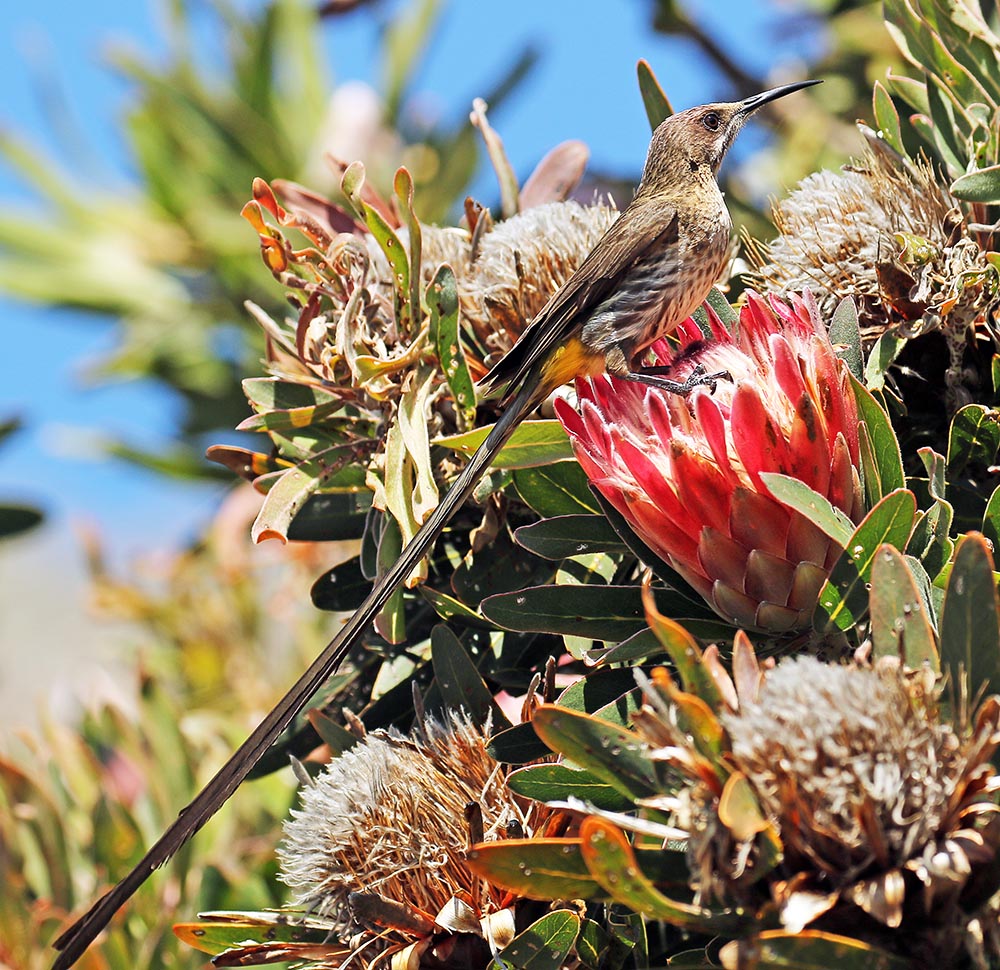
Protea is the type genus for the family. There are over 70 species. They are found in Africa, with over 90% of species being endemic to the Cape floristic region of southern South Africa, where they are known as suikerbos. However, they are very popular as cultivars in gardens around the world.
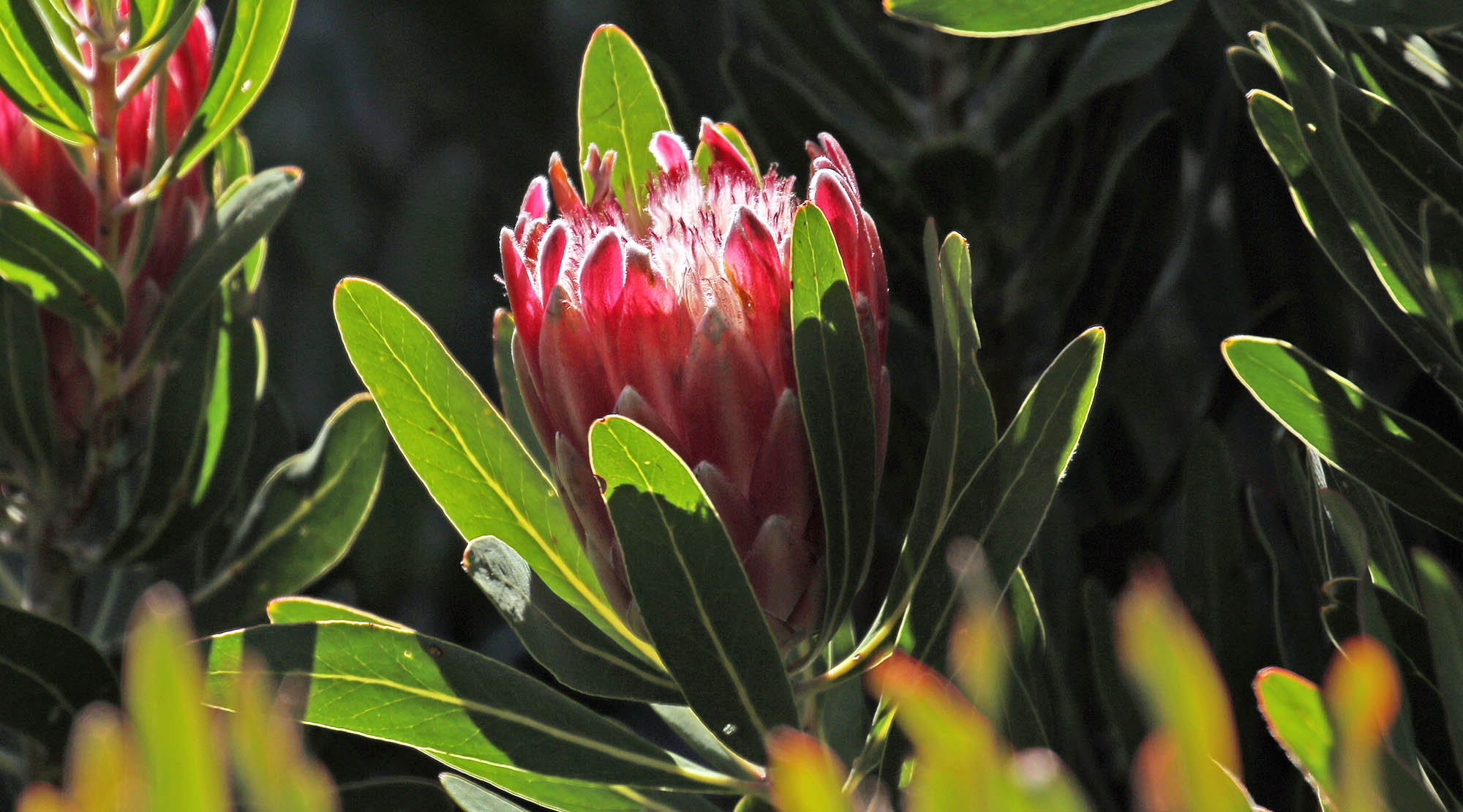 'Sugarbush'. Endemic to southern South Africa, although a wider distribution than many other Proteas. One of the most popular Proteas to garden (Simons Town).
'Sugarbush'. Endemic to southern South Africa, although a wider distribution than many other Proteas. One of the most popular Proteas to garden (Simons Town).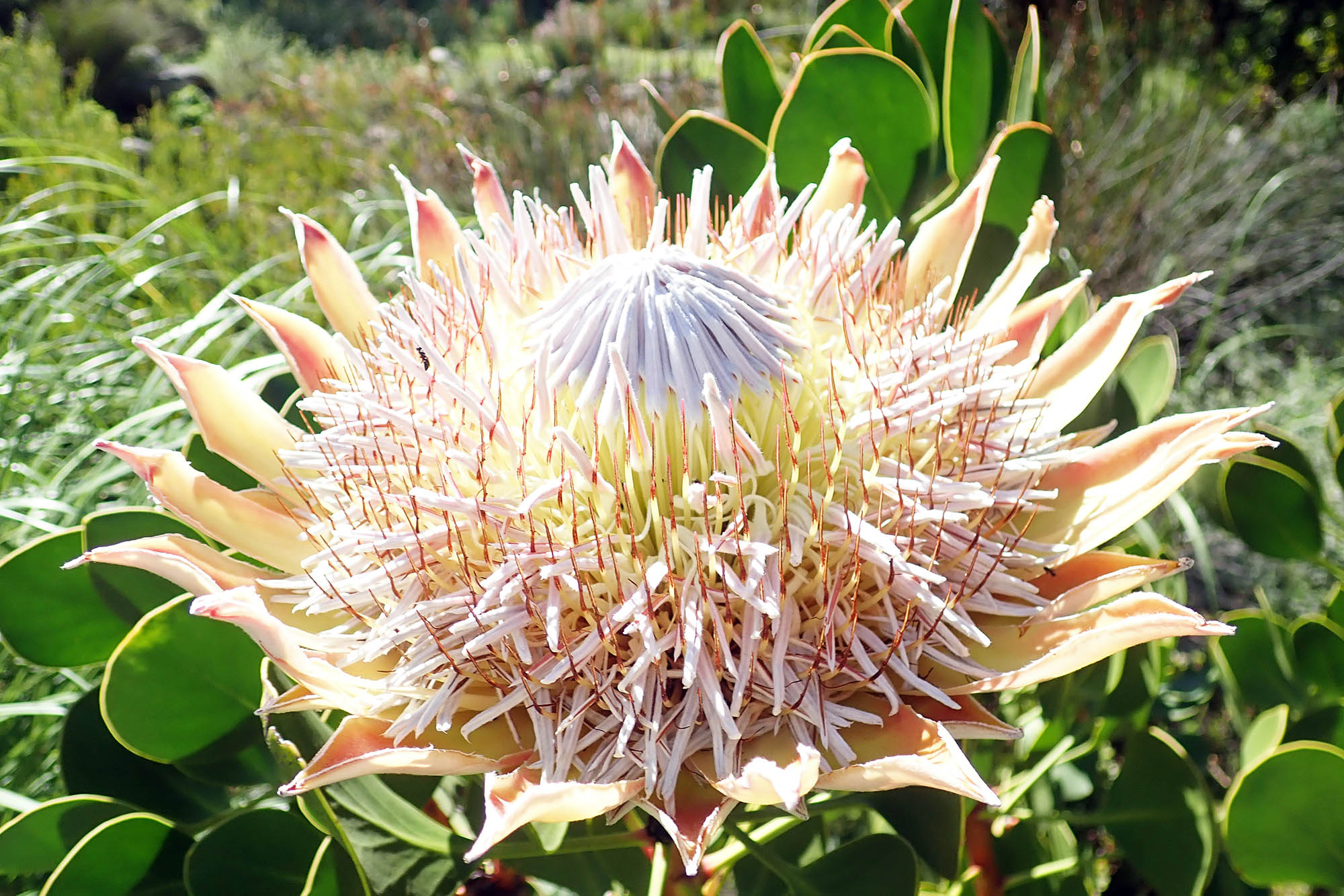 'King Protea'. Largest flower head of all the Protea, and most popular of the Proteas in gardens. National flower of South Africa. (Kirstenbosch, Cape Town)
'King Protea'. Largest flower head of all the Protea, and most popular of the Proteas in gardens. National flower of South Africa. (Kirstenbosch, Cape Town)There are 48 species of Leucospermum spp., 'Pincushion', 'Speldekussing'. They are distinguished by long styles with thickened pollen presenter at the ends. Most are found in southern South Africa.
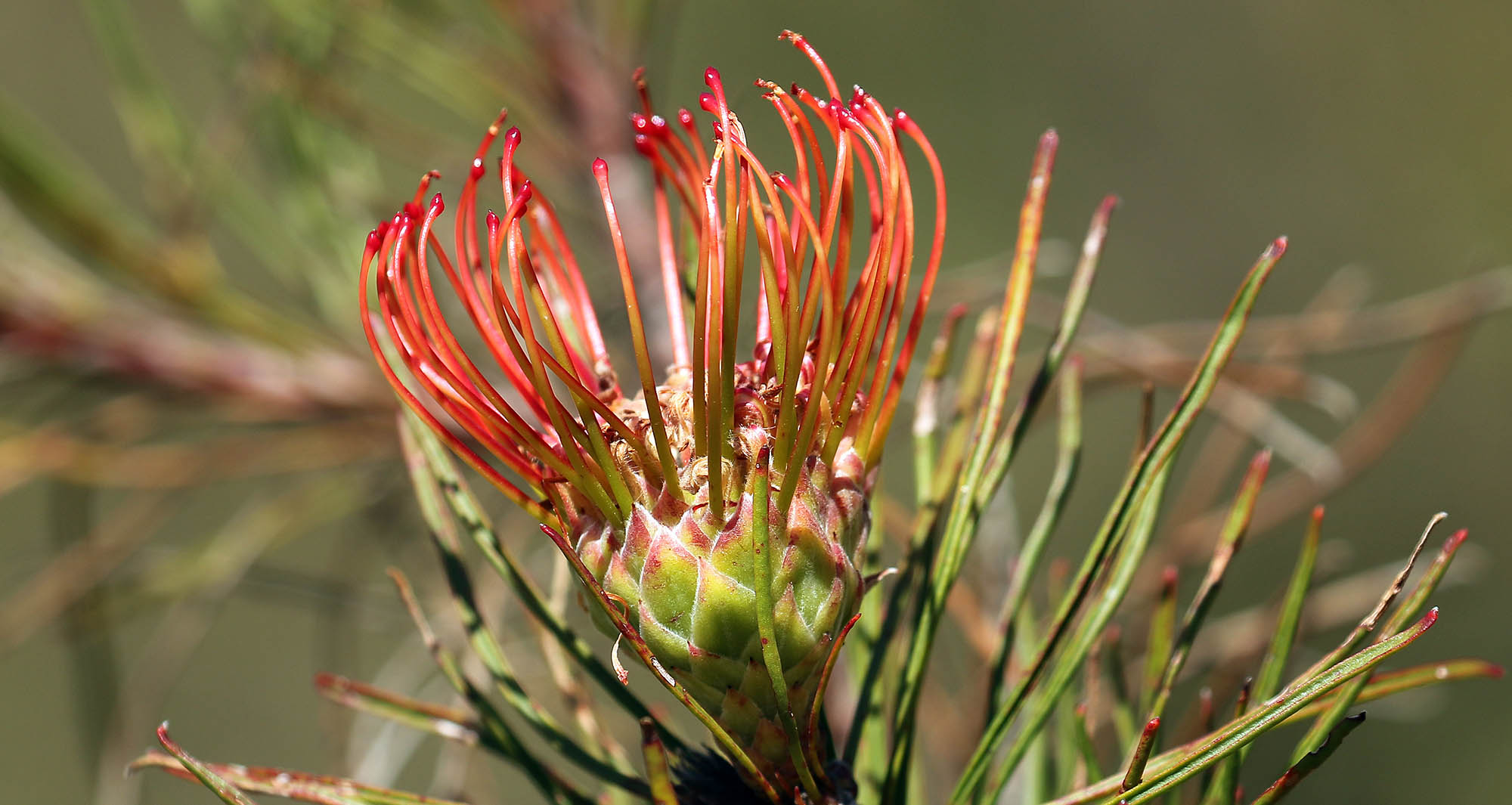 Leucospermum lineare, 'Needle-leaf Pincushion', 'Smalblaarspeldekussing'. There are both yellow and orange-red coloured flower forms. Endemic to southern South Africa (Kirstenbosch Botanical Gardens).
Leucospermum lineare, 'Needle-leaf Pincushion', 'Smalblaarspeldekussing'. There are both yellow and orange-red coloured flower forms. Endemic to southern South Africa (Kirstenbosch Botanical Gardens). Leucospermum oleofolium, 'Flame Pincushion'. Endemic to a small area in south-western South Africa, (Cape Town).
Leucospermum oleofolium, 'Flame Pincushion'. Endemic to a small area in south-western South Africa, (Cape Town).There are 13 species of Mimetes spp., 'Pagoda', 'Stompie'. The leaves usually stick out evenly and at an upward angle from the erect branches, with the flowers poking out regularly from between the leaves. All species are endemic to southern South Africa.
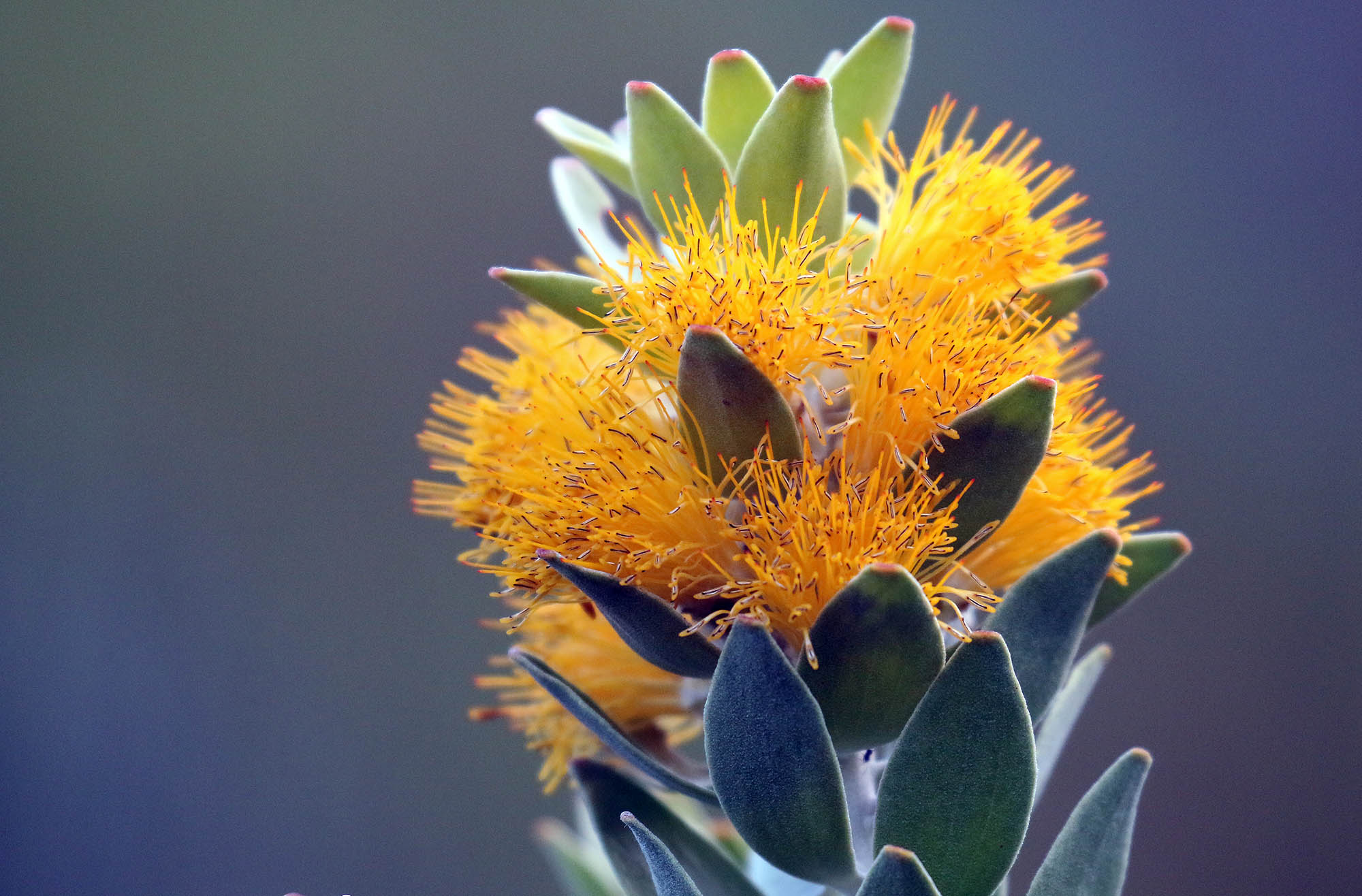
The 800 species in the genus Pelargonium are often commonly known as 'Geraniums', although there is a closely related genus called Geranium. Unlike the 'true Geraniums' which are annual flowers in temperate climates, the flowers in this genus are perennials that live in sub-tropical areas. And while true Geranium have actinomorphic flowers (having a symmetrical shape) the Pelargonium are zygomorphic, often with two larger petals sticking up above and three petals hanging out below. Although there are various species across the Indo-Pacific area, 90% of species are found in southern South Africa. There are also many hundreds of garden varieties
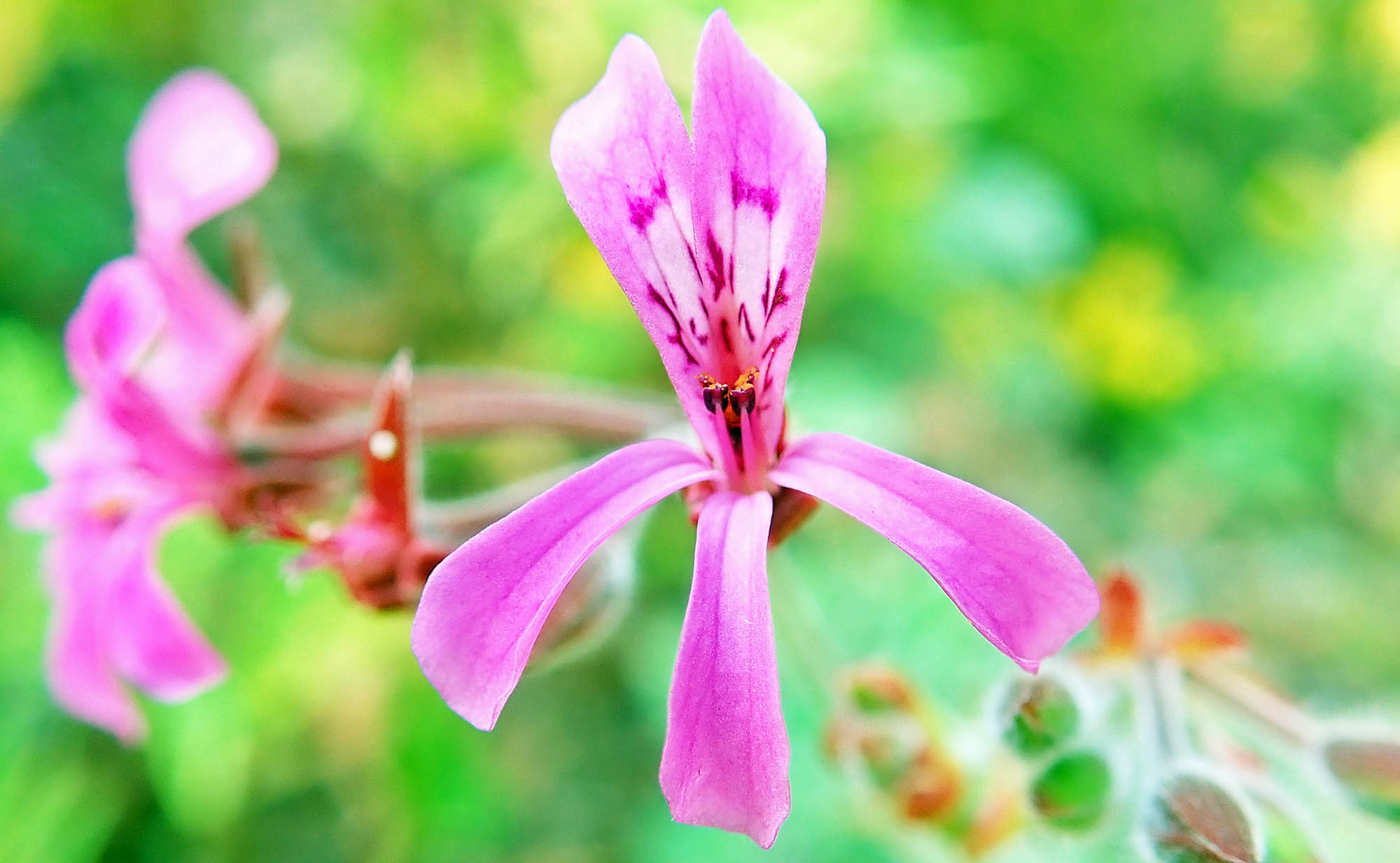
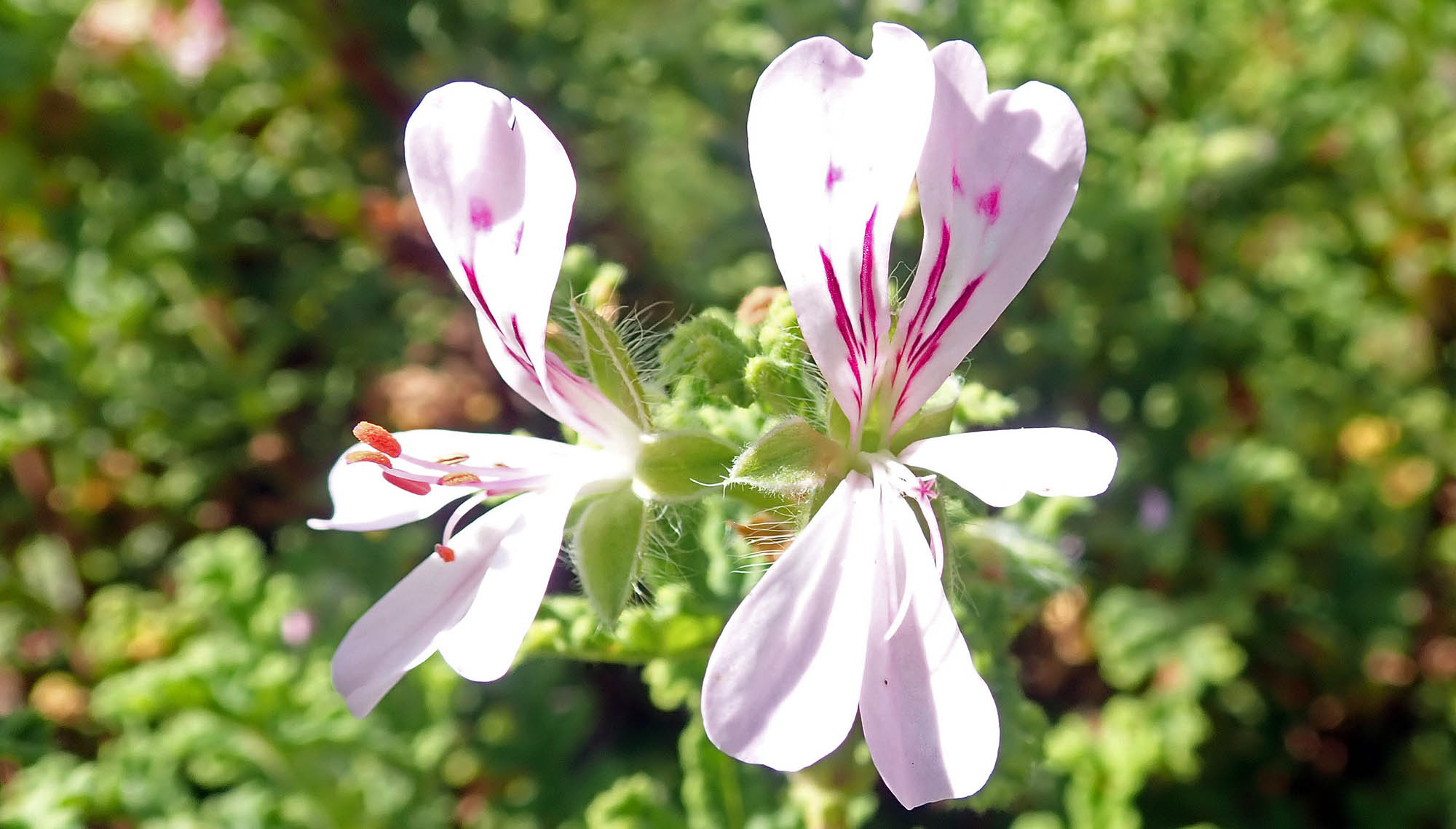
There are 140 species in the genus Agathosma . They are all small shrubs or prostate. Most species have aromatic leaves. They are all found in southern South Africa.
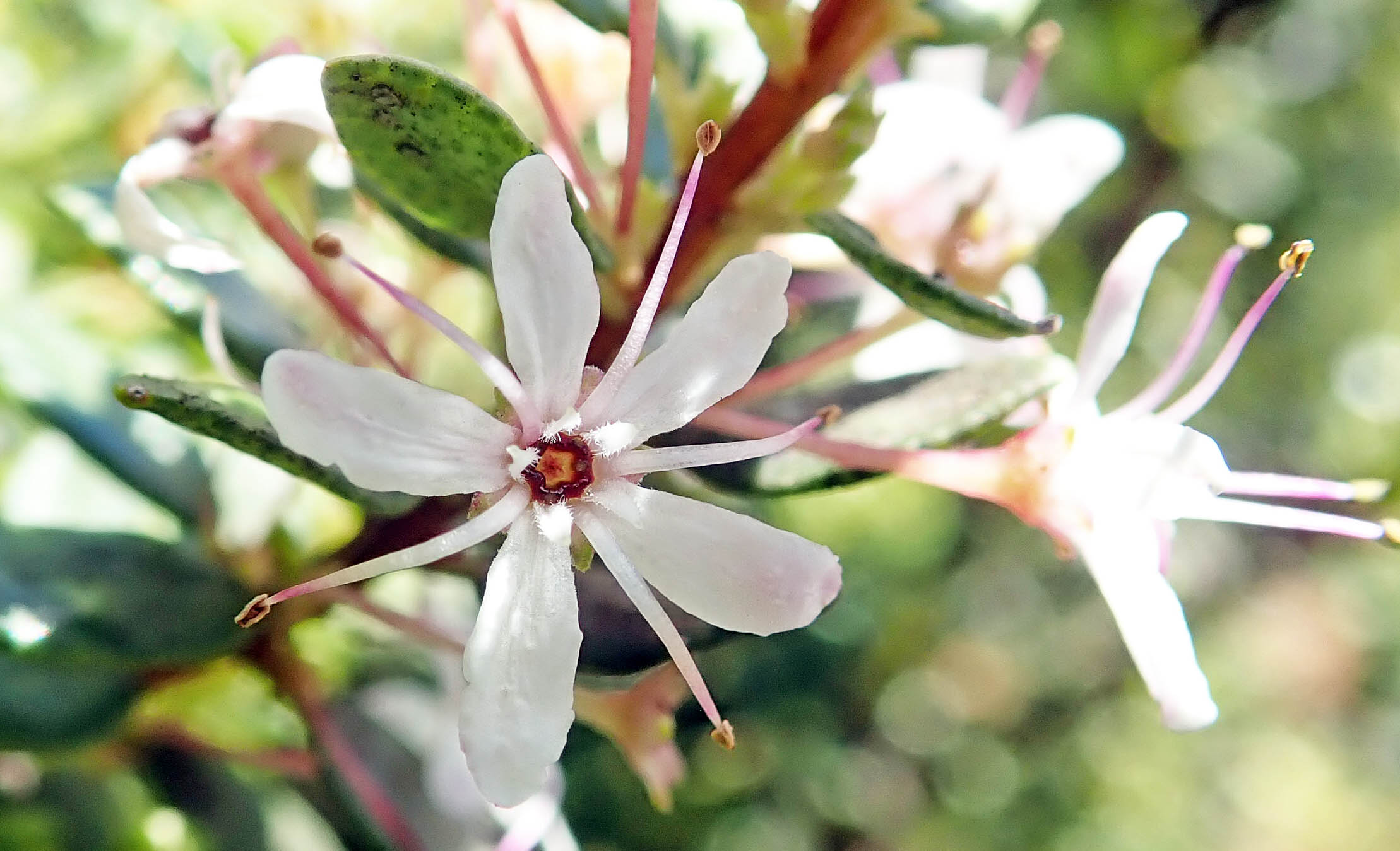 Agathosma ovata, 'False Buchu' (Kirstenbosch Botanical Gardens, Cape Town).
Agathosma ovata, 'False Buchu' (Kirstenbosch Botanical Gardens, Cape Town).One of the biggest families of plants in southern Africa is Ericaceae.
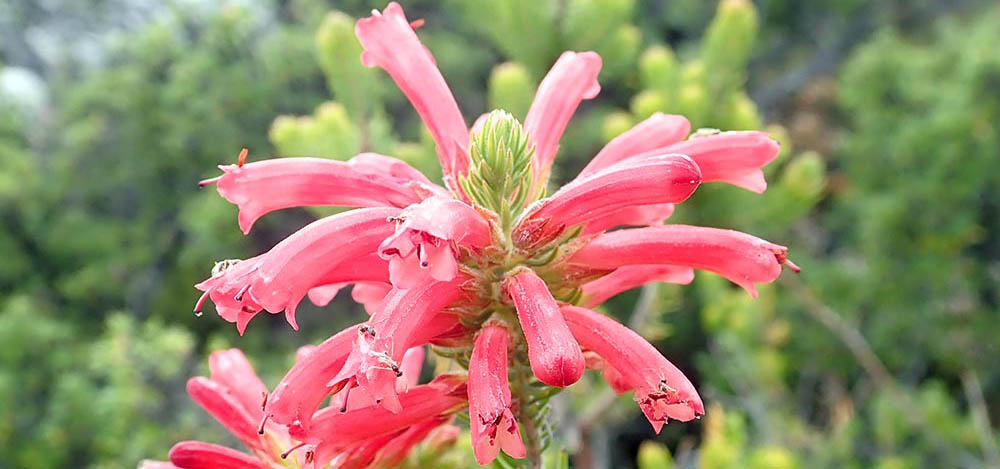 Erica abietina. Endemic to southern South Africa, (Table Mountain, South Africa).
Erica abietina. Endemic to southern South Africa, (Table Mountain, South Africa).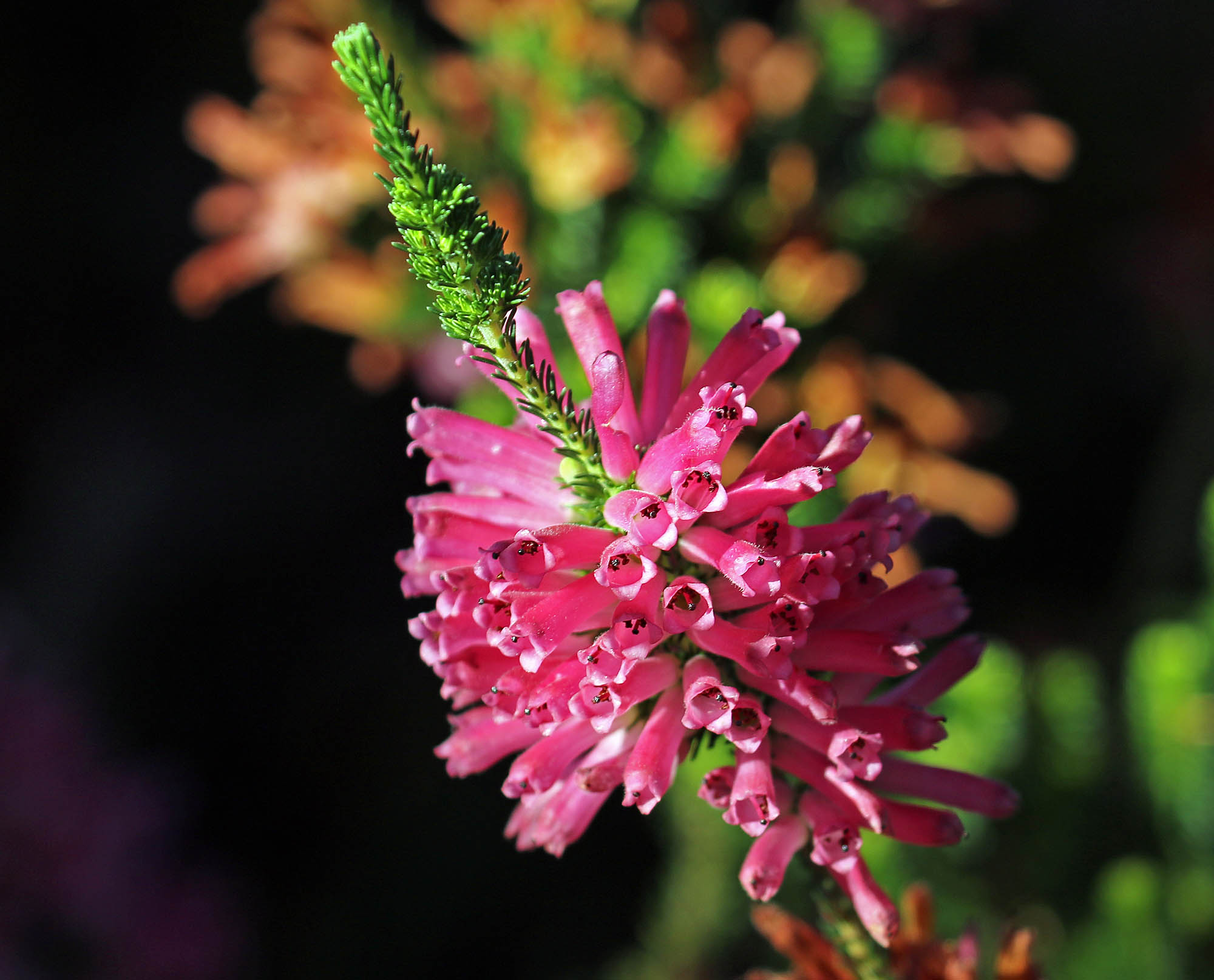 Erica verticillata. Was endemic to sandy fynbos around Cape Town, but now thought to be extinct in the wild. Survives in gardens (Kirstenbosch Botanical Gardens).
Erica verticillata. Was endemic to sandy fynbos around Cape Town, but now thought to be extinct in the wild. Survives in gardens (Kirstenbosch Botanical Gardens).With so many flowers, there are of course insects to pollinate them...
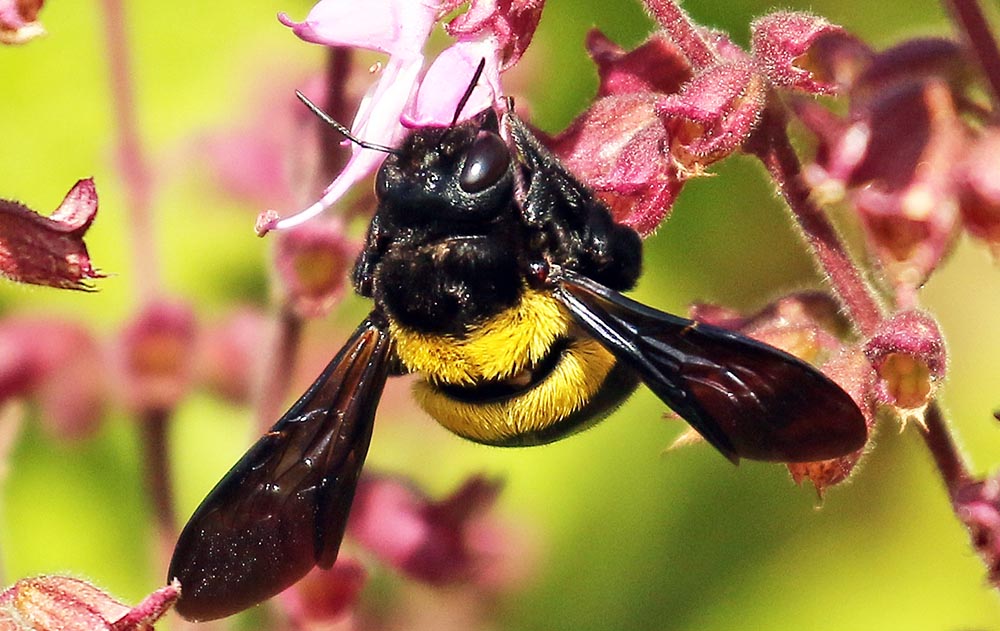 Xylocopa, 'Carpenter Bee' .
Xylocopa, 'Carpenter Bee' .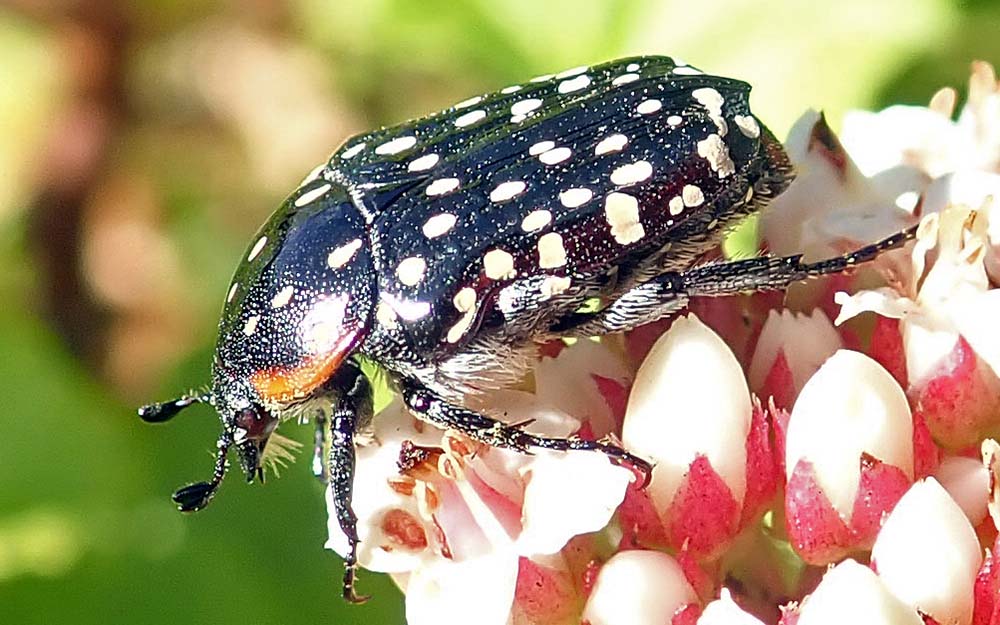 Cyrtothyrea marginalis, 'Common Dotted Fruit Chafer'.
Cyrtothyrea marginalis, 'Common Dotted Fruit Chafer'.The most obvious birds of the fynbos are the nectar feeders. The family Nectariniidae includes the most diverse of the Old World nectivores - the Sunbirds...
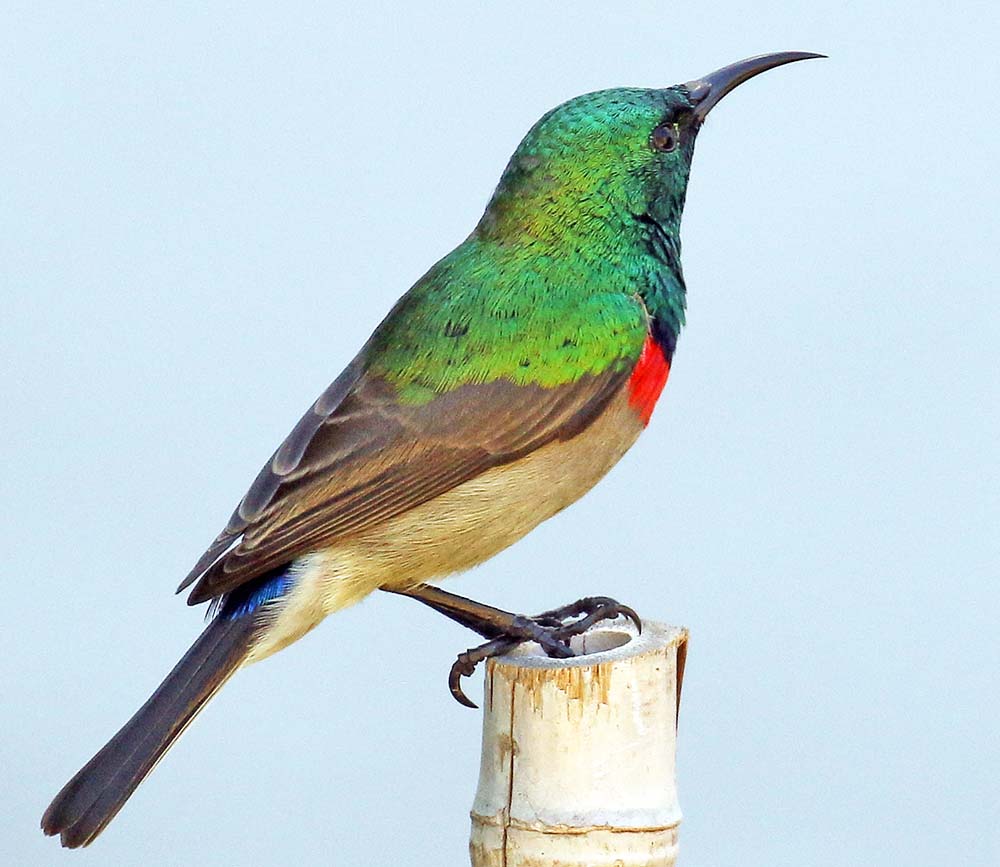 'Southern Double-collared Sunbird', (Avian Leisure, Cape Town).
'Southern Double-collared Sunbird', (Avian Leisure, Cape Town).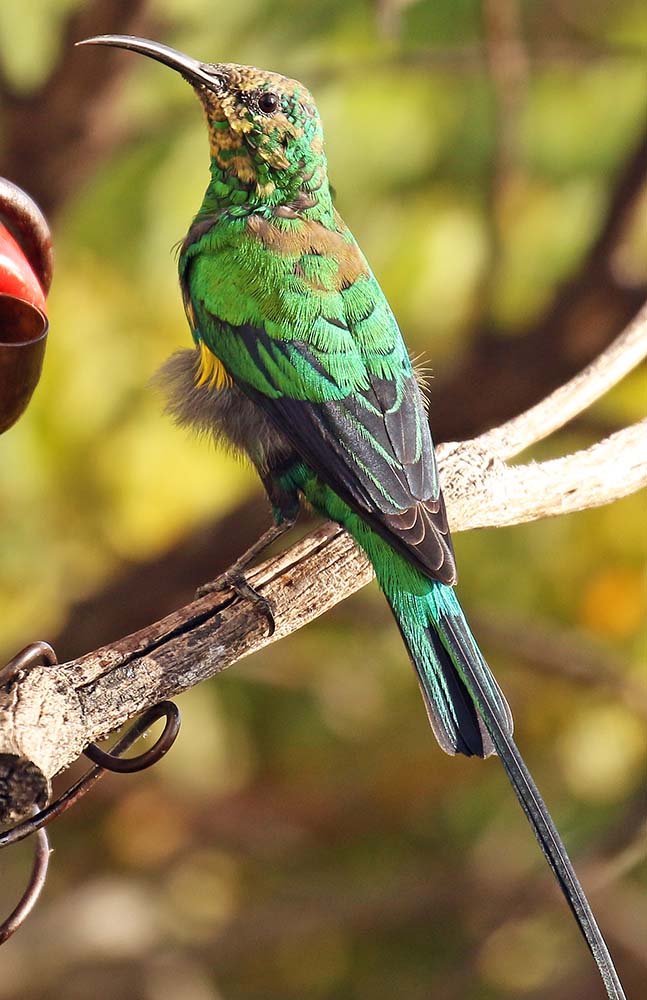 'Malachite Sunbird', (Avian Leisure Cape Town).
'Malachite Sunbird', (Avian Leisure Cape Town).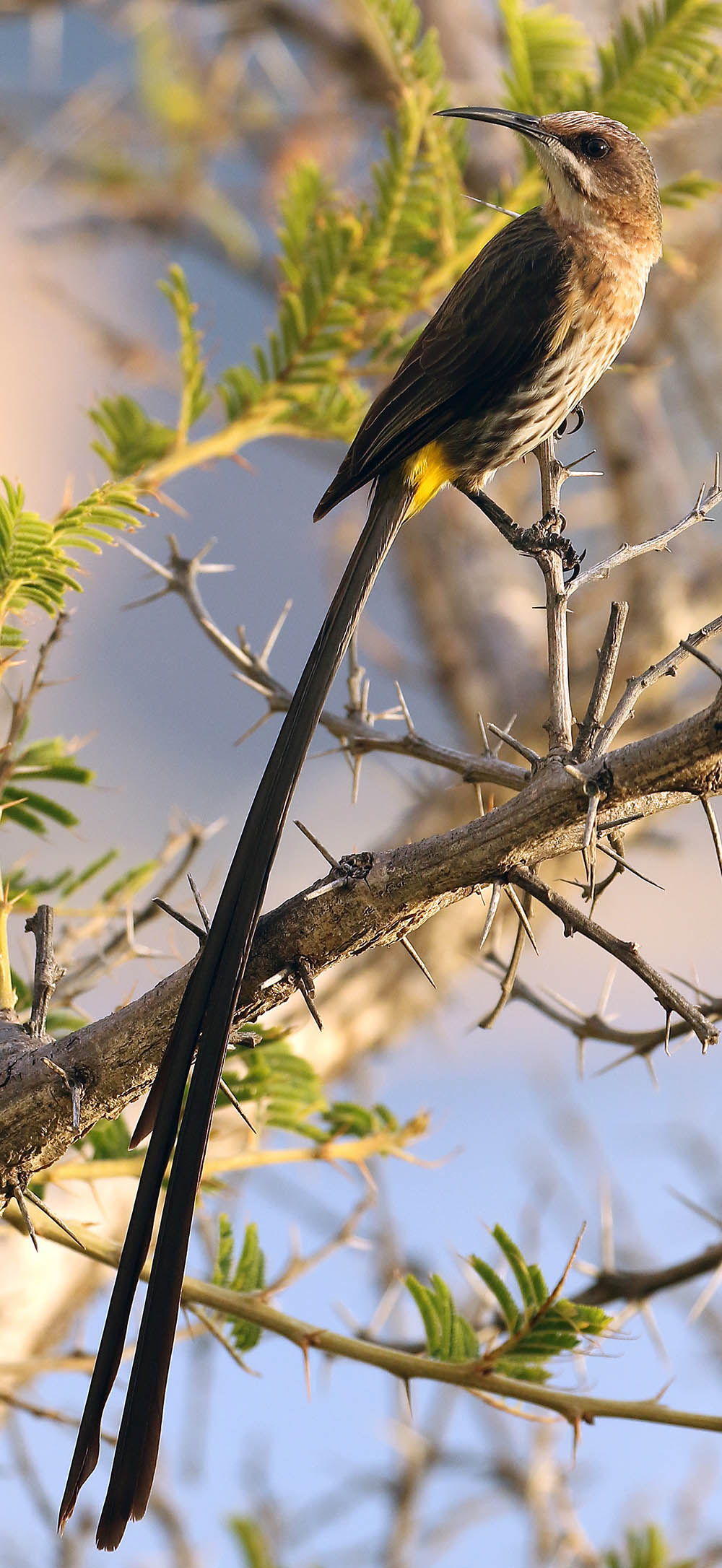
The Sugarbirds are a small family of only two species. Their evolutionary relationships to other birds is still being resolved. As they share their habitat with old world tropical Sunbirds, and resemble them in look and habit, they were once assumed to be in the same family. As they also look very similar to the Australasian honeyeaters, it has been suggested they evolved from the Meliphagidae. The similar features are now thought to be the result of convergent evolution and they are placed firmly in their own family. They have a curved bill for poking into flowers. The males have long tails. As the name implies, they feed on the sweet nectar of flowers. Both species feed mostly off the flowers of Protea. They also take insects that are caught at the flowers. They are also easily enticed into urban areas with sugar feeders. They are found only in southern Africa. The species pictured above is Promerops cafer, 'Cape Sugarbird'.
The Fynbos doesn't have an obvious abundance of large animals like the savanna, but there are some species to be found. Many areas around the world have mammals adapted to living in rocky outcrops. In North America it is the Mountain Goat, in Asia it is the Serows, in the Himalayas it is the Tarkin and the Tahr, and in Australia it is the rock wallabies. In sub-Saharan Africa, it is the Dassie or Hyrax.
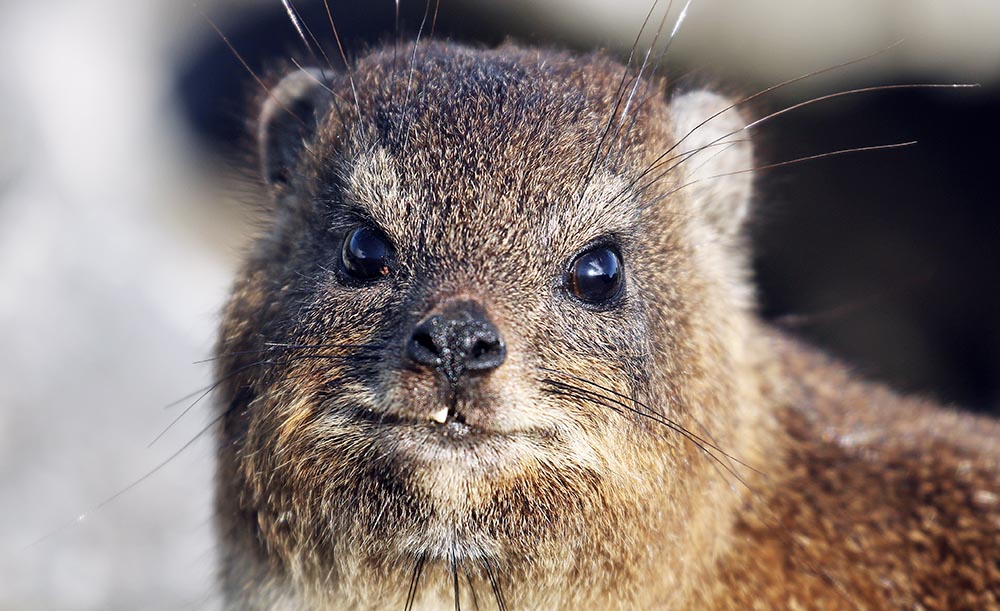 'Cape Hyrax', 'Rock Hyrax', 'Rock Dassie', (Table Mountain, Cape Town South Africa)
'Cape Hyrax', 'Rock Hyrax', 'Rock Dassie', (Table Mountain, Cape Town South Africa)Places to explore the African Fynbos
The main centre and jumping off point for exploring the fynbos heathlands of South Africa is of course Cape Town. While here, you can explore the Botanical Gardens for 'captive' fynbos species and Table Mountain for wild ones. If you want to see some of the native birds and get out of the city, a great place to stay is Avian Leisure.



